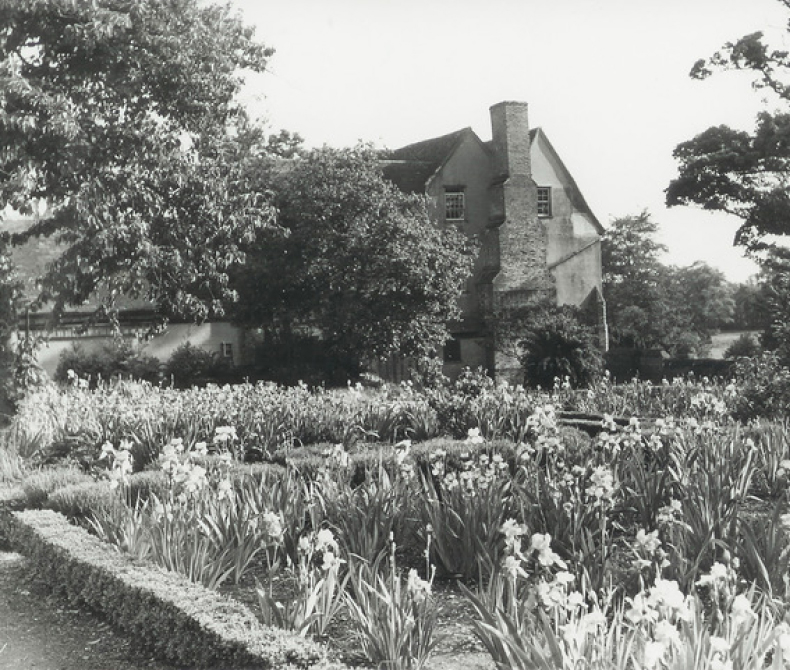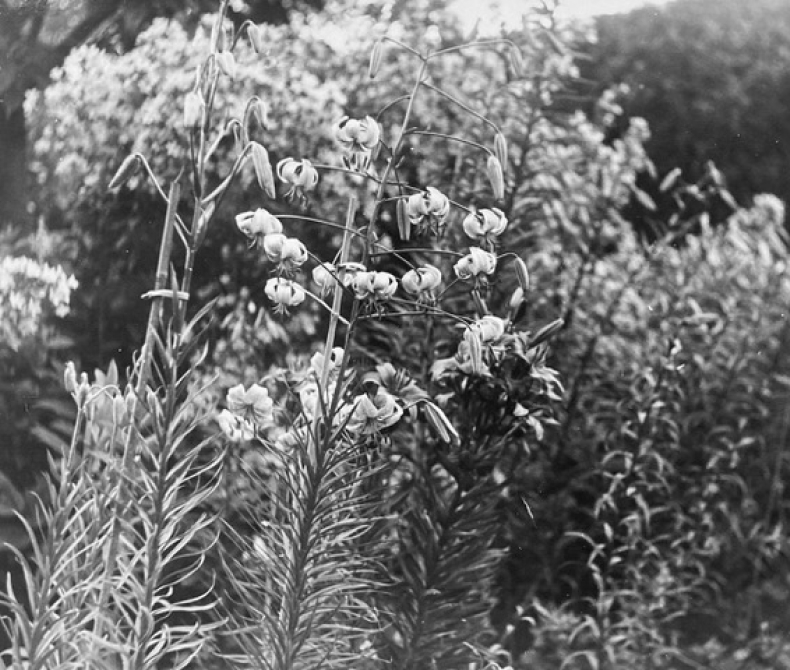

The garden at Benton End was a plantsman’s paradise. Famous for breeding tall bearded irises Morris was also an avid plant hunter. At Benton End he amassed a huge collection of rare and unusual plants. A skilled plantsman, many of the plants Morris grew were notoriously difficult. Specimens and seeds collected on his winter painting retreats to the Mediterranean were brought back to his garden in Suffolk and revered by botanists and gardeners alike.
Benton Nigel was named after Nigel Scott who was a nurseryman introduced to Cedric through Beth Chatto. Cedric and Nigel became close and Nigel moved into Benton End, helping Cedric in the garden and with the cultivation of his irises. For some years the two of them would go on winter plant-hunting trips together until Nigel tragically died in 1957 whilst in the Canary Islands.

Benton End House is seen at the top centre of this aerial photograph taken in the early 1950’s. Benton End Farm fills the left side of the image, while on the right the form of the walled garden during that period can be clearly seen. Benton End appointed James Horner as Head Gardener in 2023. Prior to his arrival Head Gardener of the Garden Museum, Matt Collins tended to the garden at Benton End and recording ‘Cedric’s Ghost’, a term coined by Sarah Cook to describe the plants that remain in the garden – relics from Morris’ reign.
Though the intention is not to return the garden to its former incarnation, or to attempt to mimic a time and a certain energy that cannot be recreated, these plants form part of the story of this plantsman’s garden in Suffolk and it’s enlivening to see some of Benton End’s floral residents repatriated.
The garden around the house has paved and mown areas with mature shrubs and trees including species roses and a huge fine Pinus nigra subsp. salzmannii.
To the east of the property lies the 1⁄2 acre lower walled garden, with loamy, neutral, free draining soil. Once home to Morris’ rare and special plants many of which he collected on his winter travels abroad, this area is currently maintained as a meadow with mown paths. Every spring the meadow is studded with bulbs including fritillaries, species tulips and narcissus. There are a number of trees and shrubs in the lower garden including a veteran medlar tree, characterful Cercis siliquastrum and unusually large corkscrew hazel.
The top garden is laid to lawn with specimen Pinus strobus and old pear trees. There are a range of garden buildings including Morris’s original greenhouse. A corner of the top garden is fenced and currently used as a kitchen garden/ stock beds for cut flowers and Morris’ border irises. Beyond, the garden becomes wooded and wild, dominated by the colossal original seedling of Rosa ‘Sir Cedric Morris’. A haven for wildlife, badgers, muntjac and rabbits all inhabit the garden which is being managed organically.
Images courtesy of John Morley
Text courtesy of Lucy Skellorn
